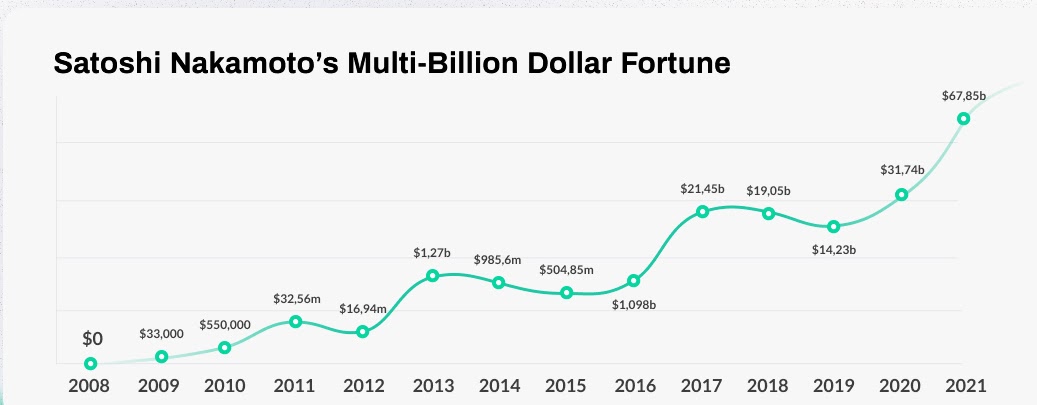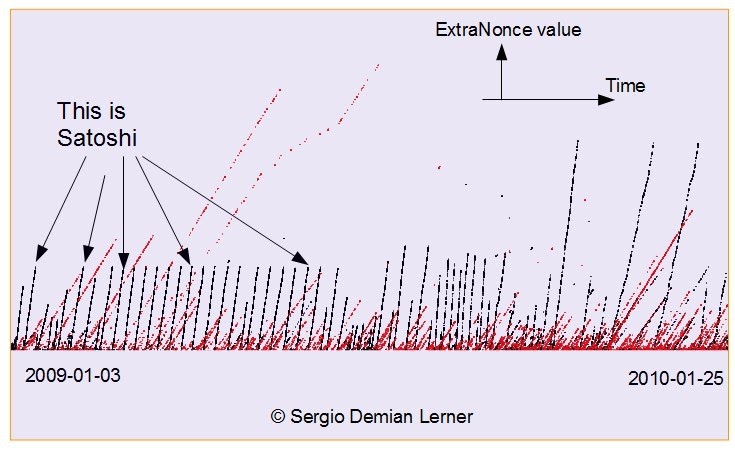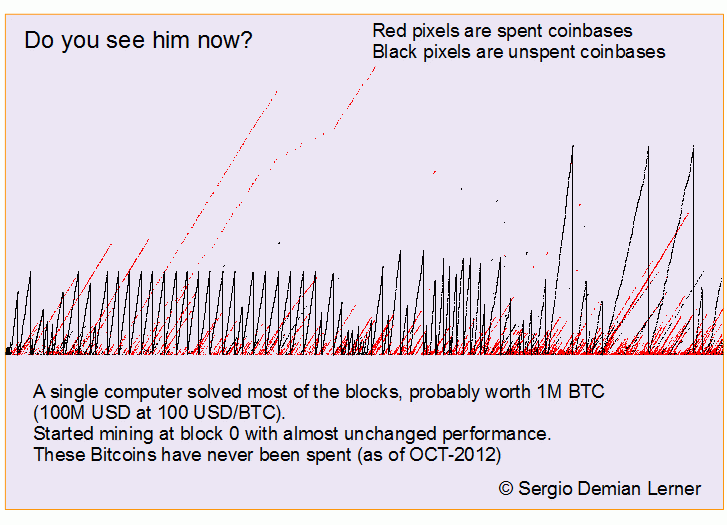Is Satoshi Nakamoto the individual who owns the most Bitcoins?
Is Satoshi Nakamoto the individual
Who owns the most Bitcoins?

When one thinks about the “Bitcoin Rich”, names such as the Winklevoss Twins, Michael Novogratz, Barry Silbert, Tim Draper, Dan Morehead and Brian Armstrong pop-up almost immediately.

While these individuals, who are known for their deep involvement in the Bitcoin ecosystem (either as investors, entrepreneurs or developers) and are known to have a net worth in the hundreds of millions of dollars and in some cases, billions of dollars, certainly deserve the title of Bitcoin Rich, none of them come even close to possessing the fortune of Satoshi Nakamoto, who famously launched the Bitcoin Network in 2009.
While the identity of Satoshi Nakamoto remains a complete mystery (and in all honesty Satoshi Nakamoto’s identity should not be relevant in one’s quest to determine if the individual or group individuals named “Satoshi” owns the most bitcoin, and how many exactly), it has become clear, thanks to the work of researchers such as Sergio Damian Lerner, that this pseudonymous entity is indeed sitting at the top of the Bitcoin Rich list.
What is interesting is that Satoshi seemed to care much more about Network Security than becoming rich, as 99.9% of the bitcoins associated with his mining activity are unspent:
“I’m looking for the truth, and with the forensic evidence we have today I’m more convinced than ever that Satoshi cared about the network security much more than becoming bitcoin rich.” (Sergio Demian Lerner).
Satoshi Nakamoto’s Bitcoin Fortune
The analysis of Satoshi’s mining activity in the early days of Bitcoin and of his fortune can become deeply technical and we do not aim to plunge the readers in the complexities which have become associated with this line of discussion. Below, we aim to provide a non-technical overview of the information currently available on this topic.
Satoshi Nakamoto obviously owned (we should assume, given no proof of the contrary, that Satoshi Nakamoto is still alive, and therefore we should be using the present tense!) a very large amount of Bitcoin as he was the one to first mine the digital asset. He was the only miner during the first 14 days of the network. It is said that Satoshi was able to mine 1.1 million bitcoins, which in US dollar terms is worth, at the time of writing, 35 Billion. Satoshi Nakamoto’s fortune stood at 65 Billion dollars when the price of bitcoin reached its 2021 highs of 65 thousand dollars.

The total hashrate in 2009 stood at approximately 7 million hashes per second (it stands today at 101.56 Ecta Hashes per second. 1 Ecta hash is 1 quintillion hashes!) and one miner was highly dominant. Interestingly enough, this hashrate was consistent with the hashrate that can be identified during the first 14 days of the Bitcoin Network’s existence, during which Satoshi Nakamoto was the only miner.
Recent research states that (and that is consistent with his supposed benevolent nature) he could have mined even more Bitcoin but that he deliberately held back, in order to give other miners a chance at finding blocks and mining the currency. Data suggests that he may have turned his equipment off for the first 5 minutes of every block interval.

A Lone Miner dominates the
early days of Bitcoin Mining
Sergio Damian Lerner’s research on early Bitcoin mining has produced the most convincing data to date.
Lerner took a long, hard look at Blocks mined between January the first, 2009 and January twenty-fifth, 2010 (that is, blocks 1 to 36288). His initial hypothesis was that these blocks were mined by the same entity using the same mining equipment. Lerner ultimately found out that a single entity using a single mining rig mined thousands of blocks between this time, and amassed approximately 1.1 million bitcoins in rewards. Lerner branded “Patoshi Pattern” a pattern of blocks (starting from the Genesis block) that appears to be mined by this single entity. Since this pattern begins with the Genesis block (the first block ever produced and the beginning of the Bitcoin Blockchain), it is assumed that this lone miner, who reaped rewards for 22 000 blocks, is none other than Satoshi Nakamoto himself.
Lerner is not the only one who took a keen interest in the amount of Bitcoin Satoshi amassed. Bitmex Research’s analysis, which by their own admission is not perfect and relied on manual review, statistical analysis and random number generators, produced data that confirmed in part Lerner’s own research. Both studies diverge in the amount of Bitcoin they attribute to Satoshi. While Lerner stated that Satoshi was able to amass 1.1 million BTC, Bitmex Research has come up with a much more conservative figure, six hundred thousand to seven hundred thousand BTC.

A particular mining setup
The type of hardware that Satoshi used in the early days of the Bitcoin network has been discussed over and over. Satoshi might have been using a particular type of setup that gave his mining activity a certain signature, which researchers analyzed and identified.
Mining Bitcoin consists, in short, in producing a value called a Nonce (an abbreviation for “Number used only once”) which, after being cryptographically encoded or hashed, has to be less or equal to the one used in the most recent Bitcoin Block approved by the Network. Miners across the globe are engaged in a race to find and broadcast the “Target Hash”.
Interestingly enough, it is believed that Satoshi can be identified with near certainty by the setup he used to find target hashes. The setup he used gave him a distinct advantage over other miners:
“Patoshi used a more powerful system than the others. Not because he had a supercomputer, but because he used his computer better.” (Sergio Damian Lerner)
It is assumed that he used a computer with the latest chips available in 2009, and multi-threading, a process in which a miner can search for multiple nonces at the same time. This is done by using each core processor in a CPU individually to search for a block’s nonce or by processing many nonces through a streaming SIMD Extensions Instruction, a technique used for intensive computer processing.
In addition, Satoshi might have been using an idiosyncratic technique which was not included in the first version of the Bitcoin client. While we will not dive into the specifics of the method, which would require an article itself, the core of the method is that the Patoshi mining code increased the “extraNonce” field differently than the code shipped with Bitcoin Core 0.1.0.
Final Thoughts
While a number of well-known personalities involved in the bitcoin ecosystem for a number of years, such as Roger Ver, Barry Silbert and Dan Morehead, are said to possess a bitcoin fortune worth hundreds of millions of dollars, it can be said that, without the shadow of a doubt, the individual or group of individuals known as Satoshi Nakamoto sits at the top of the Bitcoin Rich list, with an unspent fortune ranging from 600 000 to 1.1 million Bitcoins. 99.9% of those mining rewards have never been spent, which confirms the rumors regarding the benevolent, altruistic character of Satoshi, who was more concerned about the security of his network, development and adoption.

